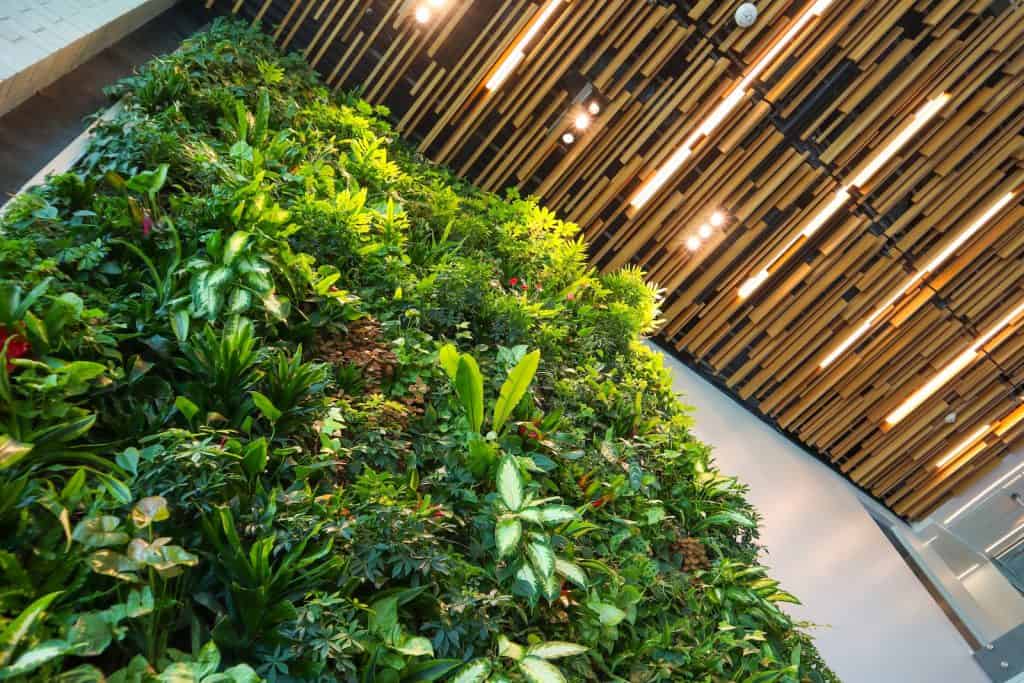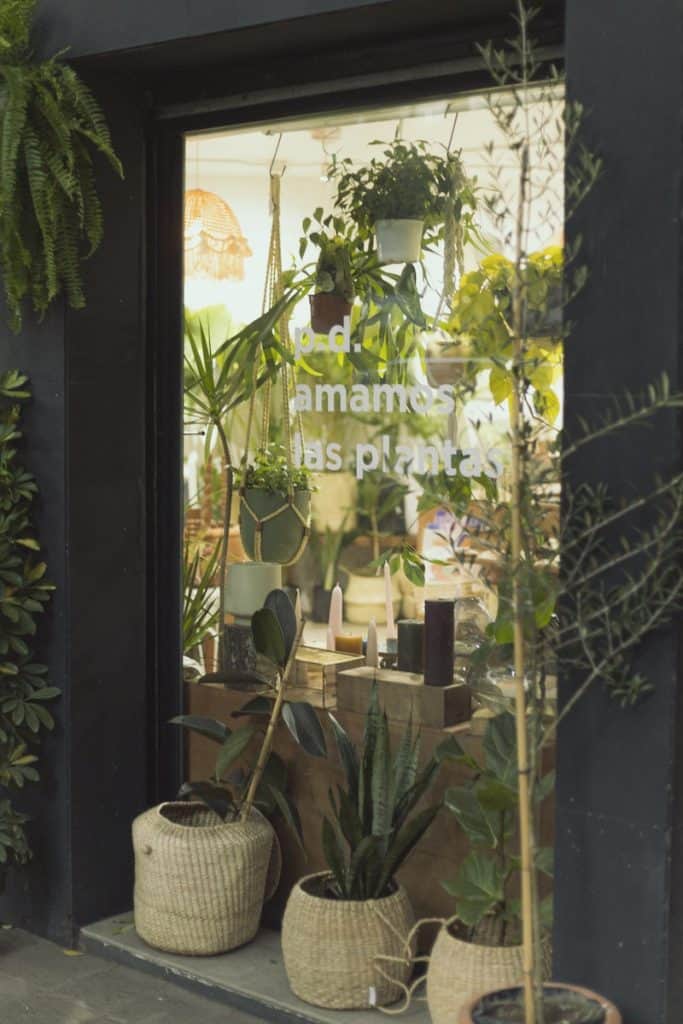Living walls, also known as green walls or vertical gardens, have become increasingly popular in recent years. Not only do they bring life and color to your indoor or outdoor space, but they also provide numerous environmental and health benefits. This blog post will cover everything you need to know about living walls, including their history, elements, and benefits. Whether you’re a home gardener or a business owner looking to elevate their space, you’ll learn how to create your own living wall and make a beautiful, lasting impact on any environment.
History and Development of Living Walls
Believe it or not, living walls aren’t a recent invention. Their origins can be traced back to the Hanging Gardens of Babylon, one of the Seven Wonders of the Ancient World. Modern living walls, however, have come a long way since their humble beginnings. Today, they are an innovative and environmentally friendly way to incorporate nature into urban spaces, thanks to advancements in design and technology.
Key Components of a Living Wall
A successful living wall is dependent on several key elements, from its structure to its plant selection. Below, we discuss each of these components.

Structural Elements and Base Panels
At the heart of any living plant wall is its structure. Durable and sturdy materials like aluminum or sturdy plastic are commonly used for the frame and base panels. These act as support systems for the plants and provide the wall’s foundation.
Plant Selection and Arrangement
Choosing the right plants is crucial for creating a living green wall that thrives and remains visually appealing. When selecting living wall plants, consider factors like your indoor or outdoor environment, the climate, your wall’s exposure to sunlight, and your maintenance capabilities. Opt for a combination of large plants, small plants, and trailing plants to create depth and variety in your vertical garden.
Irrigation System
A well-functioning irrigation system is essential for keeping your living plant wall healthy and vibrant. There are several types of irrigation systems available, from hand watering to automated systems. The choice depends on the size of your wall, the type of plants you’re using, and your budget.
Feeding and Nutrient Supply
In addition to water, living walls require the right balance of nutrients to thrive. Elements like liquid feed and slow-release fertilizer can provide the essential nutrients, while a proper irrigation system can ensure an even distribution of these nutrients across your green wall.
Maintenance and Care
Finally, maintaining the health and appearance of your living wall is vital. This includes regularly monitoring water levels, checking for pest issues, pruning, and replacing plants as needed. A well-maintained living wall can bring life and beauty to any space.
Benefits of Living Walls

Living walls don’t just look good; they also have numerous benefits for both people and the planet. Here are some of the top advantages:
Environmental Advantages
1. Air Purification and Pollution Reduction: Living walls help purify the air by absorbing pollutants and emitting oxygen. This process, known as phytoremediation, has been proven to reduce volatile organic compounds (VOCs) and carbon dioxide, improving indoor and outdoor air quality.
2. Temperature Regulation: Green walls can help regulate a building’s temperature by insulating it in cold weather and cooling it during hot periods. This reduces the need for artificial heating and air conditioning, ultimately saving energy and contributing to a smaller carbon footprint.
3. Stormwater Management: Urban environments experience increased stormwater runoff, which negatively impacts water quality and increases the risk of flooding. Living walls can contribute to stormwater management by reducing runoff and filtering pollutants.
4. Wildlife Habitat: Living walls act as a habitat for insects, birds, and other small creatures, promoting biodiversity in urban areas.
Aesthetic Appeal and Design Flexibility
Living walls are undoubtedly attractive additions to any space, be it indoors or outdoors. They not only provide a striking visual element but also create a calming atmosphere that evokes a connection to nature. Living walls are highly adaptable and can be designed to suit various spaces and styles.
Health and Wellbeing Benefits
By improving air quality, reducing noise pollution, and providing a natural focal point, living walls contribute to better mental and physical wellbeing. A connection to nature is proven to reduce stress, increase creativity, and enhance overall health.
Economic Advantages
1. Energy Savings: As mentioned earlier, living walls can help regulate a building’s temperature, leading to reduced energy consumption and utility bills.
2. Potential to Increase Property Value: By investing in a living wall, you may increase the appeal and overall value of your property.
3. Noise Reduction: Living plant walls can provide a sound barrier, making them ideal for homes or commercial spaces in noisy urban areas.
4. Branding and Marketing: For businesses, living walls can help create a unique brand identity and provide a positive message about corporate social responsibility.
Living Wall Examples and Inspiration

Living walls can be found in many forms and styles. Here are some inspiring examples of residential and commercial living walls in various settings.
Residential Living Walls
1. Indoor: An indoor living wall can instantly transform a room, turning blank walls into lush, vibrant spaces. They’re particularly suitable for small apartments where floor space is limited. Add a stunning plant wall to your living room, kitchen, or even your bathroom.
2. Outdoor: Enhance your garden, patio, or even transform a plain garden fence with a living wall. Incorporate edible plants, herbs, and flowers to create a functional vertical garden that’s both pleasing to the eye and practical.
Commercial and Public Living Walls
1. Office Buildings: Increase employee morale and productivity by adding a living wall to office spaces or reception areas.
2. Retail Spaces: Make a bold statement in fashion boutiques, malls, or other retail outlets with eye-catching plant walls.
3. Restaurants and Cafes: Enhance the dining experience and create a unique ambience with living walls artfully arranged inside or on the exterior of restaurants and cafes.
4. Urban Greening: Bring life and greenery to concrete jungles by incorporating living walls into public spaces, like city parks and sidewalk installations.
5. Educational Institutions: Instill a sense of environmental responsibility and appreciation for nature in students by installing living walls in schools, colleges, and universities.
How to Get Started with a Living Wall
Creating your own living wall may seem overwhelming, but with proper planning and guidance, it can be a rewarding project. Follow these steps to get started on your living wall journey.
Assessing Your Space and Choosing the Right Location
Consider the space you have available and determine where you want to install your living wall. Keep in mind factors such as natural light, climate, and accessibility for maintenance. If you’re new to living walls, start small by creating a small section of the wall or installing wall planters before committing to a whole wall project.
Factors to Consider in Selecting a Living Wall System
There are various living wall systems available in the market, from DIY living wall kits to custom-built systems by professionals. Think about your budget, the size of your project, and the level of expertise required when choosing the right system for your space.
Connecting with Professionals and Suppliers
Consult with professionals such as landscape architects, horticulturists, or living wall specialists to get expert guidance and recommendations. Also, seek out suppliers who can provide quality plants, materials, and resources to bring your living wall to life.
Budgeting and Project Planning
Develop a budget for your living wall project, considering factors such as materials, plants, installation, and ongoing maintenance costs. Create a detailed plan and timeline for your project to help keep the process organized and well-coordinated.
Tips for Living Wall Success

Follow these tips to ensure the longevity, health, and beauty of your living wall.
Selecting Appropriate Plants for Your Specific Environment
The right plants make all the difference in the success of your living wall. Do your research and consult with experts or local nurseries to find plants that are suitable for your climate and the specific conditions of your space. Some popular plants for living walls include ferns, succulents, herbs, ivy, and staghorn ferns.
Monitoring and Maintaining Proper Irrigation
Your living wall’s irrigation system is crucial for its survival and health. Be vigilant about checking your wall’s watering needs and ensuring the system is functioning efficiently.
Providing Adequate Light and Temperature
Make sure your living wall receives enough natural light or invest in artificial light sources if needed. Monitor the temperature and humidity of your space and make adjustments accordingly to ensure the wellbeing of your plants.
Regular Care and Maintenance
Just like a traditional garden, living walls require consistent care and attention. Regularly check for pests, diseases, and other potential issues. Prune and trim your plants as needed, and replace any dead or unhealthy plants to maintain the wall’s appearance.
Final Thoughts
Living walls have the power to completely transform your space, be it indoors or outdoors, at home, or in your workplace. By integrating these vertical gardens, you not only create a visually stunning focal point but also greatly contribute to environmental sustainability and personal well-being.
Now that you have a better understanding of living walls and their benefits, why not take the plunge and create your own living wall? Start small if you’re new to the concept, experiment with different plants and arrangements, and watch as your space comes to life with vibrant greenery.
As always, we invite our readers to share their experiences, ideas, and questions in the comments section below. Together, we can create a community of inspired and knowledgeable living wall enthusiasts, striving for a greener and more beautiful world.
Other suggested articles:

